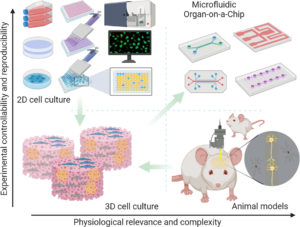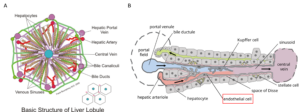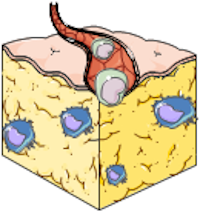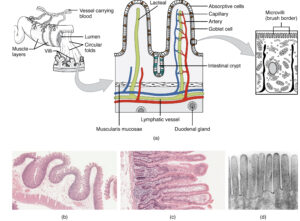Introduction
Organ-on-a-Chip is a potential, multidisciplinary method for in-vitro modeling of disease, drug screening, and precision medicine that simulates in-vitro physiology and pathology.
Organ-on-a-chip technology may be integrated organically into the drug development pipeline for preclinical screening, testing, and translating novel medicines from early drug discovery to bridging the gap between animal and human subject research.

In the future, it will be unprecedented to promote its biomedical applications through further development of customized organ-on-a-chip and ongoing integration of novel engineering tools (i.e. automation handling, 3D printing, in situ multi-Sensor systems) and biological concepts (e.g. patient-induced pluripotent stem cells and organoids).
How to culture vascularized & immunocompetent 3D models in a standard Multiwell
Abstract
The authors state that “The pharmaceutical industry has been desperately searching for efficient drug discovery methods. Organ-on-a-Chip, a cutting-edge technology that can emulate the physiological environment and functionality of human organs on a chip for disease modeling and drug testing, shows great potential for revolutionizing the drug development pipeline.
However, successful translation of this novel engineering platform into routine pharmacological and medical scenarios remains to be realized. In this review, we discuss how the Organ-on-a-Chip technology can have critical roles in different preclinical stages of drug development and highlight the current challenges in translation and commercialization of this technology for the pharmacological and medical end-users.
Moreover, this review sheds light on the future developmental trends and need for a next-generation Organ-on-a-Chip platform to bridge the gap between animal studies and clinical trials for the pharmaceutical industry.”.
References
Ma C, Peng Y, Li H, Chen W. Organ-on-a-Chip: A New Paradigm for Drug Development. Trends Pharmacol Sci. 2021 Feb;42(2):119-133. doi: 10.1016/j.tips.2020.11.009. Epub 2020 Dec 16. PMID: 33341248; PMCID: PMC7990030.
FAQ
Organ-on-a-Chip is an approach for creating models in a laboratory. This technology is applied to disease study, drug screening, and personalised medicine. It is designed to copy the biological processes and operating conditions of human organs on a small device. The system is used for disease investigation and for testing drugs. Efficient drug discovery methods have been sought by the pharmaceutical sector. This chip technology is being examined for its ability to improve the drug development process. The transfer of this new engineering system into regular pharmacological and medical use has not yet been fully accomplished.
Organ-on-a-Chip technology can be included in the drug development process. It may be used for early-stage evaluation and examination of new medicines. This technology is intended to help connect animal studies with research involving human subjects. The system is noted as having important functions at different non-clinical stages of development. A main goal is to provide a better link between animal studies and later clinical trials. Efficient drug discovery methods are needed by the pharmaceutical sector. This technology is designed to be added to the existing workflow for creating new medicines, although its adoption is not yet widespread.
The adoption of Organ-on-a-Chip technology is not yet complete. The movement of this engineering system into regular pharmacological and medical use is still to be accomplished. There are current difficulties in this transition. There are also difficulties in making the technology available commercially for medical and drug-related purchasers. While the system is seen as a way to improve the drug development process, its widespread application is not yet a reality. A review of the topic discusses these specific problems related to its transfer and availability. Overcoming these issues is necessary for the technology to be widely accepted and used in its intended settings.
Future work is expected to involve the creation of more specific organ-on-a-chip models. New equipment and methods will be combined with these systems. This includes automated handling, additive manufacturing, and in-place multi-detector systems. New biological concepts are also expected to be included. Examples of these concepts are pluripotent stem cells derived from patients and small, self-organized tissue structures. The biomedical applications of this technology are expected to be promoted through these developments. A need for a new version of this system is also discussed. This improved system would be intended to help connect animal studies and human clinical trials for the pharmaceutical sector.





